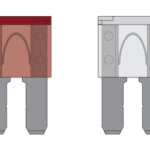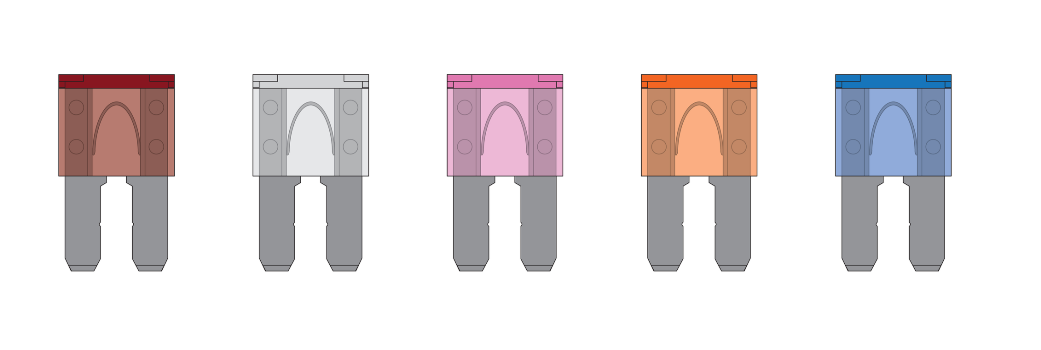 For many people, dealing with their car’s electrical issues can be intimidating, if not downright scary. Modern vehicles are a lot more complex than they used to be. All the electronic gadgets and accessories require complicated wiring, fuses, and relays. For the average person, it may seem like a puzzle without a solution. Hopefully, this blog will help you understand how your vehicle’s electrical system uses the car fuses in your fuse box to avoid unnecessary auto repairs.
For many people, dealing with their car’s electrical issues can be intimidating, if not downright scary. Modern vehicles are a lot more complex than they used to be. All the electronic gadgets and accessories require complicated wiring, fuses, and relays. For the average person, it may seem like a puzzle without a solution. Hopefully, this blog will help you understand how your vehicle’s electrical system uses the car fuses in your fuse box to avoid unnecessary auto repairs.
What Are Car Fuses?
Car fuses are like the ‘canary in the coal mine’. They monitor and circulate the electric current that powers your vehicle’s systems. Car fuses break, protecting electronic components from sudden spikes of electrical flow caused by bad wiring or other electrical issues.
How Does The Fuse Box Work?
Your vehicle’s fuse box utilizes fuses to protect the electrical circuits from overloading. The car battery supplies power to the fuse box, which connects to the individual electronic components. Each of the car fuses contains an internal wire that pops when the current exceeds the fuse’s limit. The amp limit is noted on each fuse and usually follows a specific color-coding system.
Where Is My Car’s Fuse Box?
Typically, your car comes equipped with two fuse boxes: one located under the hood and the other in the glove box, under the dashboard, or near the steering wheel. The fuse box located in the engine compartment controls various components, including the battery, engine control unit (ECU), and cooling fans. The fuse box inside the cabin controls auxiliary systems, such as lights, GPS & entertainment, and other electronic devices (including windows, door locks, seats, etc.).
Types Of Car Fuses
Here are the different types of fuses commonly used in the automotive industry for electrical components in modern internal combustion vehicles. Car fuses in electric vehicles are a whole other ball of wax.
Blade Fuses
Most cars use blade fuses in variable amps. These types of fuses are available in several different sizes, including:
- Micro2 (5-30 amp)
- Micro3 (5-15 amp)
- Mini & Low Mini (2-30 amp)
- Regular ATO/ATC (1-40 amp)
- Maxi Heavy Duty (20-100 amp)
Tube Fuses
Older model vehicles may use clear glass tube fuses. Tube fuses are small glass cylinders, about ¼” in diameter and various lengths, with metal caps on each end. Inside the glass tube is a thin wire. They are often available in ratings of 1A to 30A. Tube fuses rated for automotive use include:
- 1AG
- 3AG
- 7AG
- 8AG
- SFE
Replacing Car Fuses
When an electrical component stops working, like the radio or high beams, you may have a blown fuse. The good news is that swapping out a blown fuse is pretty easy. Let’s break it down into a few steps.
Identify Blown Car Fuses
First, you must locate the correct fuse box for the component. The location of fuse boxes varies by vehicle year, make, and model. If you cannot find your fuse box, try looking in your owner’s manual for the location. Auto manufacturers often show detailed diagrams inside the fuse box lid. These diagrams identify which fuse supplies electricity to each component. Once you locate the fuse box, open it and identify the slot for the part in question using the provided diagram. If you can’t find your fuse box diagram, try looking here.
What Do Blown Fuses Look Like?
- The colored plastic shell is burned or melted
- The inner wire is broken
- The fuse casing is cracked
- Corrosion on metal tabs
Remove Blown Fuse
First, disconnect the negative battery cable (make sure it doesn’t touch anything metal) to help avoid a short circuit. Next, gently pull out the blown fuse with a special removal tool or small pliers. Do not use a screwdriver or other implement to pry out the fuse as it may damage the fuse box and surrounding components, resulting in unnecessary auto repairs.
Insert New Fuse
Now you are ready to insert a new fuse (make sure it is the same size/color/amp) into the same spot where you removed the old, blown-out fuse.
Electrical System Service in Kirkland, WA
Electrical system issues can sometimes be tricky to resolve. If your vehicle is blowing fuses on a regular basis, there may be more going on than you realize. Fisher’s Auto Service is here to help. Our experienced technicians will gladly inspect your vehicle to diagnose and repair all your electrical system problems.
Schedule Auto Repairs
Call (425) 823-4441 or visit us online to schedule auto repairs, electrical system service, and routine maintenance appointments.

